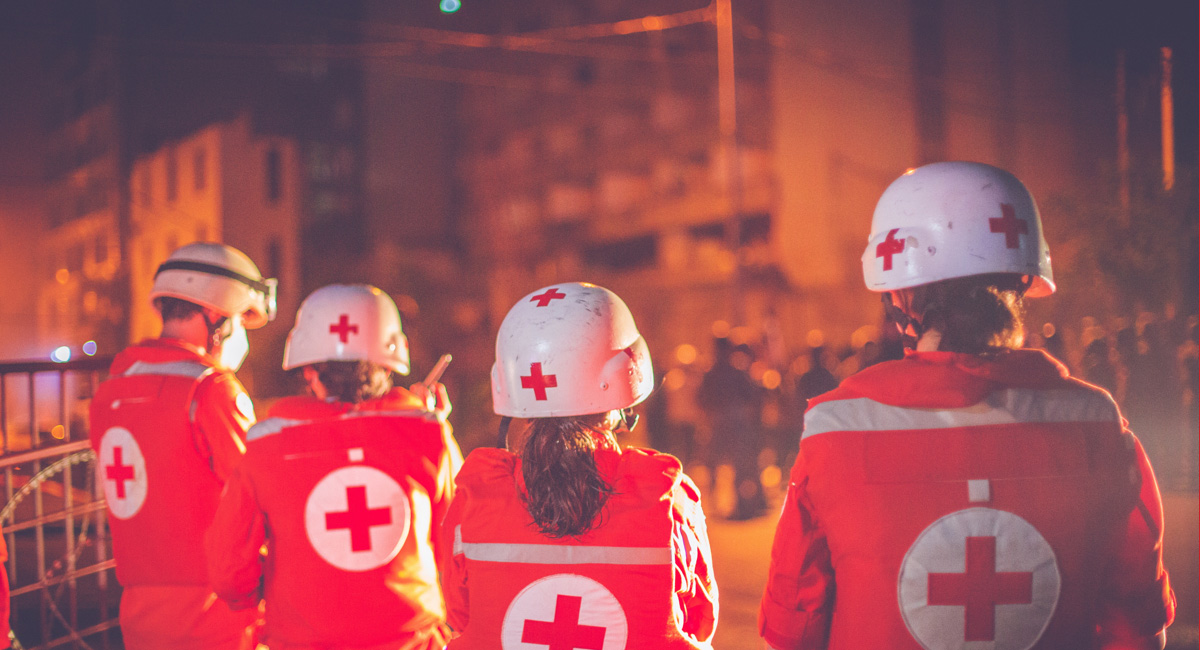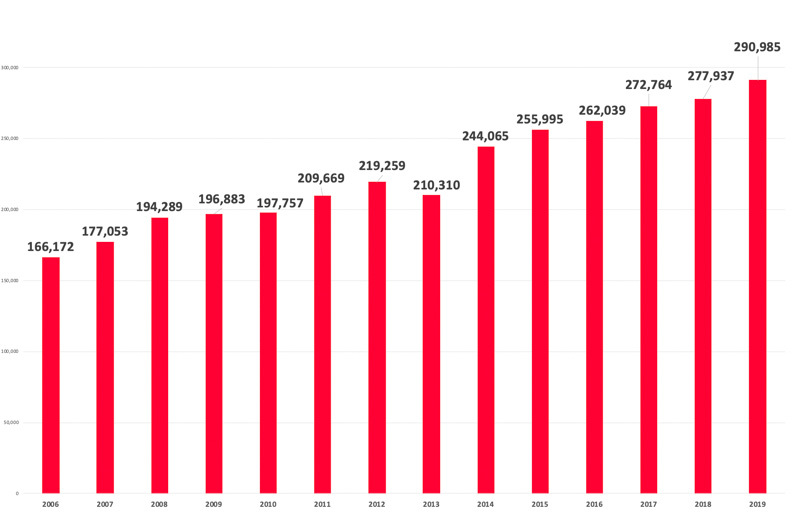
Thankfully, more often than not, it’s the first case that is true. Every year, the LRC ambulance teams respond to more than 150,000 patients, and provide services to more than 290,000 persons per year. This means that there are many people out there who are grateful that in their time of greatest need, the LRC was there right next to them, providing help and support at no cost.
From time to time however, I do hear negative comments, and I have learned to use each one of these opportunities to find out what went wrong, to identify ways in which we can provide a better service, and to explain to the public how the LRC works.

LRC has 300+ fully equipped ambulances. For each ambulance, we have to buy the van itself, then convert it to an ambulance, and then buy the stretcher and all of the needed equipment. This amounts to around 75,000 USD per ambulance, keeping in mind that the maximum useful life of an ambulance is 10 years. So, every year, we have to replace 30 ambulances, for a total cost of 2.25 million USD.
Ambulances, like all vehicles, have to be maintained. Unlike regular vehicles however, our ambulances are used intensively with hundreds of kms logged every day. These repairs and spare parts cost us more than 500,000 USD per year. Obviously, ambulances also need fuel, and depending on the market price of fuel, we pay anywhere between 0.8 million and 1.2 million USD per year just on fuel.
The main missions of LRC’s ambulance service (Emergency Medical Services):
Besides ambulance equipment which we purchase once and then use for many years, we have to constantly replenish our supply of consumables, which are all of these items like bandages, gloves, oxygen refills, masks etc. We use those only once and then throw them away. To give just one small example, for every one of the 150,000+ ambulance missions (not to mention the thousands of patients who come to clear their wounds or change their bandages in our centers), we use at least 6 pairs of gloves. Every year, we pay more than 95,000 USD just for gloves, 50,000 USD for all types of bandages and gauze, for a total of 580,000 USD for all types of consumables put together.
Automatic External Defibrillators are those devices that you see in movies when paramedics are trying to revive a patient whose heart has stopped. Together with CPR (Cardio-Pulmonary Resuscitation), they increase the chances of survival of a patient who is in cardiac arrest. The machine itself, of which the LRC has more than 150, is very expensive. But what is moreexpensive are the patches that we place on the patient’s body and which cost on average 30USD per use. Knowing that the LRC uses these on 2000+ patients per year, this single item represents a total annual cost of 60,000 dollars per year.
A mission during which we transport a patient suspected of being infected with the novel Coronavirus costs us much more than a regular ambulance mission, because all the ambulance team and the patient have to be equipped with full protective gear. So, besides the regular cost of the ambulance mission, we have to add on top of that the cost of special masks, a full protective suit, boot covers, goggles, a face shield etc. This, for a full team raises the average cost of such a mission to 850 USD. It should also be noted that this gear is not used just for COVID missions but also for all types of infectious disease missions.
Contrary to what most people would imagine, LRC also has to pay electricity, phone, water, internet and other utility bills for all of its centers. This amounts to no less than 350,000 USD per year.
Training, recruitment and uniforms: although our ambulance system is mainly based on volunteers, these volunteers have to be recruited, trained, and provided with uniforms. Being a volunteer-based system, every year we recruit 800 to 1100
New volunteers to replace the ones who leave or travel. The initial training of each volunteer takes around 60 hours, followed by more intensive training of 100 hours during their first year of volunteering (probation period), followed by annual continuing education courses and other specialization courses (drivers, team leaders, major incident management, training of trainers etc.). The annual cost to recruit, train and dress the volunteers is 1.2 million dollars.
These are just examples of our main costs and by no means a comprehensive list.
It is important to note also the value of the work of volunteers. Imagine if LRC’s ambulance response was based only on full time, paid staff, and imagine that this staff was paid at relatively low salaries, then the total cost of the work of volunteers would be more than 25 million USD per year.
It should also be highlighted that in addition to volunteers, LRC also necessarily has full time staff that is largely recruited from volunteers, and that provides specialized services as well as services during regular week days (outside of a crisis), when most of our volunteers are either studying or working.
This all means that currently, LRC’s ambulance service costs about 12 million USD per year today. However, with this budget, we are NOT able to respond in good time to ALL of our missions. We estimate that in 2019, we were NOT able to provide prompt service to around 20 to 25% of people called us on our “140” national medical emergency hotline. So, to be able to respond to close to 100% of the calls that we receive, we need an annual budget of 18.5 million USD.

LRC today is trying to actively fundraise, locally with the public and internationally with our partners, to try to cover this big gap in funding that we have today.
So there it is, our first attempt at explaining to the public at large what it costs for the Lebanese Red Cross to run its ambulance service and to provide this service to more than 290,000 persons per year (all services included).
We hope that this will clarify all the questions that we have been receiving, and we will continue over the coming weeks to share information about the other services of LRC, and to respond transparently to the questions of the public.
We thank each one of you for your trust and support, we thank every one of our volunteers for their efforts and sacrifices, and we count on you to help us respond to this ongoing crisis but also to be able to continue sending ambulances to the thousands of persons who need them each year!
The Lebanese Red Cross values the trust of the public in Lebanon, and we will spare no effort in communicating regularly and transparently with you!